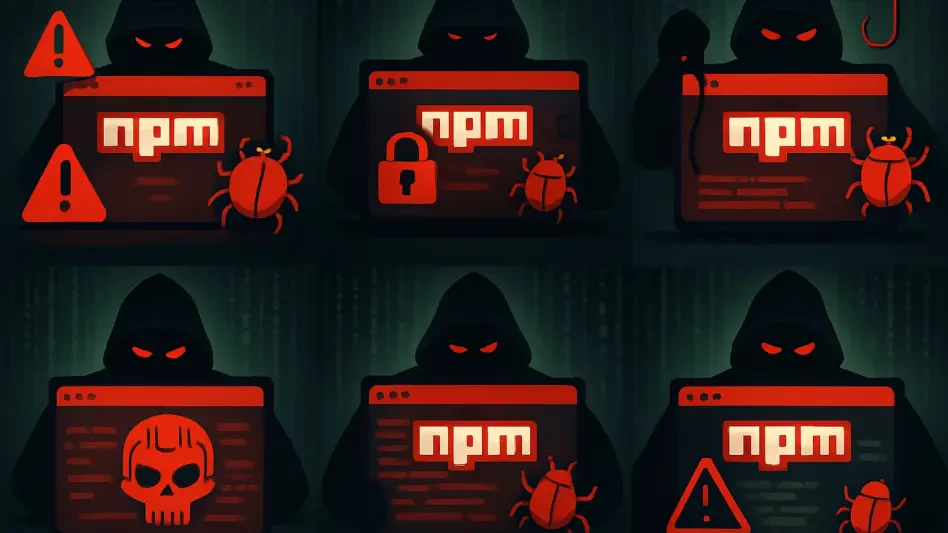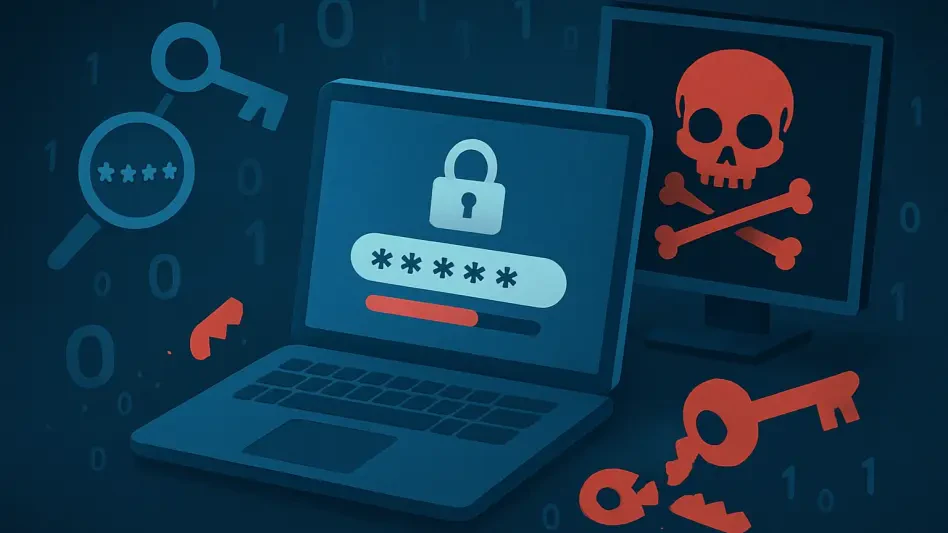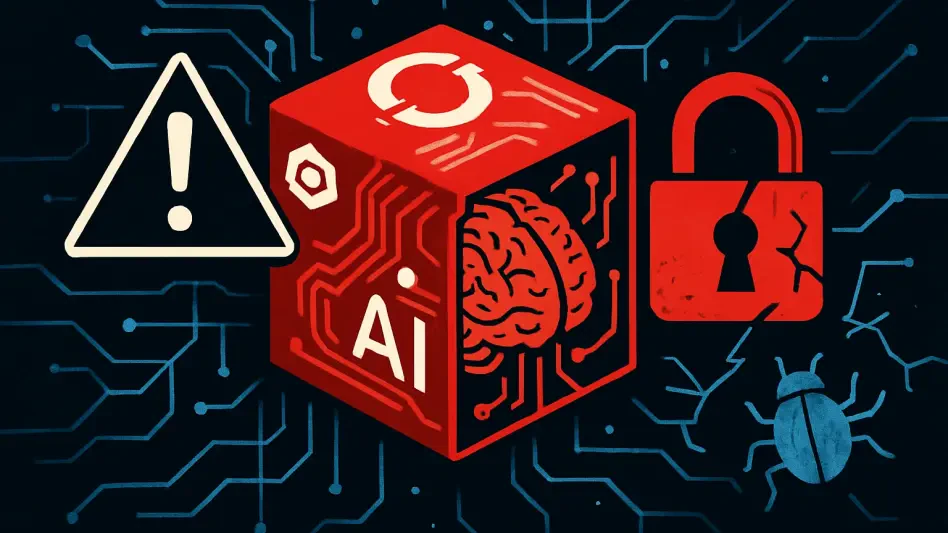Government agencies are increasingly under threat from sophisticated cyberattacks, particularly those exploiting zero-day vulnerabilities. These vulnerabilities, which are previously unknown and unpatched, pose significant risks to the security and integrity of governmental IT systems. To combat these threats, integrating predictive artificial intelligence (AI) and behavioral analytics is essential. These technologies offer a proactive approach to cybersecurity, enabling agencies to predict, detect, and respond to threats more effectively.
The Growing Threat of Zero-Day Vulnerabilities
Zero-day vulnerabilities pose a significant and growing threat to cybersecurity. Exploiting these weaknesses can allow attackers to infiltrate systems undetected, causing extensive damage before any patches or fixes are applied. The increasing frequency of these attacks highlights the urgent need for robust security measures and proactive threat detection.
Escalating Cyber Threats
As the digital landscape continues to evolve, cyber threats are becoming increasingly sophisticated and widespread, posing significant risks to individuals, businesses, and governments around the world. Cybercriminals are leveraging advanced techniques and tactics to exploit vulnerabilities in systems and networks, often resulting in substantial financial losses and compromised sensitive data. This growing menace calls for enhanced cybersecurity measures and a collaborative effort among stakeholders to effectively combat cyber threats and safeguard critical information.
Government agencies are facing an unprecedented rise in cyber threats from both domestic and foreign actors. The number of zero-day vulnerabilities discovered in 2023 has increased by over 50% compared to the previous year. These vulnerabilities allow unauthorized access to sensitive data, making them a critical concern for agencies handling classified information. This alarming increase underscores the urgency for government institutions to fortify their defenses against a rapidly evolving threat landscape.
Cyber threat actors, ranging from nation-states to sophisticated criminal organizations, capitalize on the element of surprise inherent in zero-day vulnerabilities. These adversaries are constantly innovating and deploying advanced techniques to exploit these hidden weaknesses. Government networks, which contain a treasure trove of classified information and critical infrastructure data, are prime targets. The impact of successful breaches can be catastrophic, leading to national security compromises, financial losses, and erosion of public trust. As cyber threats continue to escalate, the need for advanced detection and response mechanisms becomes more apparent.
The Impact of Zero-Day Exploits
Zero-day exploits capitalize on unknown and unpatched vulnerabilities, posing substantial risks to government networks. These exploits can lead to significant data breaches, compromising the security of sensitive information. The urgency to address these weaknesses is paramount to maintaining the integrity of governmental IT systems. When a zero-day vulnerability is discovered and exploited, there is no immediate fix available, leaving systems exposed until a patch is developed and deployed.
The ramifications of zero-day exploits are extensive, affecting not just the compromised systems but also the broader network infrastructure and associated entities. Sensitive government data, such as intelligence reports, citizen information, and classified communications, can be targeted and exfiltrated. In addition to the immediate security concerns, breached systems often require extensive forensic analysis to identify the entry points, assess the damage, and implement remediation measures. The cost, both in terms of resources and reputation, can be immense. Government agencies must therefore prioritize proactive measures to detect and mitigate zero-day threats before they can be exploited.
Leveraging Predictive AI and Behavioral Analytics
The Role of Predictive AI
Predictive AI plays a significant role in various industries by analyzing data and making forecasts that help businesses make informed decisions. Through machine learning algorithms and big data analytics, predictive AI models can identify patterns and trends that might go unnoticed by human analysts. This technology is applied in fields such as finance, healthcare, marketing, and supply chain management, enhancing efficiency and reducing operational risks. As predictive AI continues to evolve, it promises to offer even more precise and actionable insights, driving innovation and growth across sectors.
Predictive AI plays a crucial role in fortifying government cybersecurity measures. By analyzing extensive datasets, predictive AI can identify potential attack methods before they occur. This proactive approach allows agencies to stay ahead of cyber threats, enhancing their overall security posture. When integrated into cybersecurity operations, predictive AI algorithms sift through vast amounts of data to detect patterns and anomalies that could indicate an impending attack.
The capabilities of predictive AI extend beyond merely identifying known threats; it anticipates new and emerging forms of cyberattacks by analyzing trends and anomalies in the data. This forward-looking approach enables government agencies to implement preemptive measures that mitigate risks before they can fully materialize. In an environment where traditional reactive methods often fall short, predictive AI steps in as a game-changer, providing an additional layer of defense that adapts and evolves with the threat landscape. The ability to predict rather than just react offers a significant strategic advantage in safeguarding sensitive government networks.
Behavioral Analytics for Threat Detection
Behavioral analytics scrutinizes user behavior to identify abnormal or suspicious activity. By monitoring patterns and deviations, this technology can detect potential threats that may go unnoticed by traditional security measures. The combination of predictive AI and behavioral analytics provides a comprehensive approach to cybersecurity. User behavior analytics (UBA) focuses on understanding the baseline behavior of users and devices within a network, enabling the detection of anomalies that could indicate security incidents.
Behavioral analytics is particularly effective in identifying insider threats, which are often difficult to detect with conventional security tools. By examining the actions of users within the network, such as access patterns, data transfers, and communication habits, behavioral analytics can pinpoint deviations that suggest malicious activity or a compromised account. This real-time monitoring and analysis capability ensure that potential threats are flagged and addressed promptly, reducing the window of opportunity for attackers. The synergy between predictive AI and behavioral analytics enhances an agency’s ability to pre-emptively identify and mitigate threats, thereby strengthening its overall resilience.
Implementing AI and Analytics-Driven Cyber Resilience
In today’s rapidly evolving digital landscape, organizations must prioritize cyber resilience to protect against increasingly sophisticated cyber threats. Implementing AI and analytics-driven solutions can significantly enhance an organization’s ability to detect, respond to, and recover from cyber incidents. By leveraging advanced technologies, businesses can gain deeper insights into potential vulnerabilities and develop more robust strategies to safeguard critical assets. Moreover, AI can automate many of the repetitive tasks associated with threat detection and response, freeing up valuable human resources to focus on more strategic initiatives. As cyber threats continue to evolve, the integration of AI and analytics-driven approaches will become essential in maintaining a strong security posture and ensuring long-term resilience.
Strategic Integration of New Technologies
The integration of new technologies into existing frameworks requires a strategic approach to ensure smooth implementation. Businesses must assess the potential impact on their operations, identify key areas for improvement, and allocate resources effectively to support the transition. This process involves thorough planning, consistent monitoring, and the ability to adapt to changing circumstances. By taking a strategic approach, companies can maximize the benefits of new technologies while minimizing disruptions to their daily operations.
Integrating predictive AI and behavioral analytics into cybersecurity operations requires thoughtful preparation. Government leaders must clearly understand the challenges they aim to address with these technologies. Recognizing their limitations and conducting rigorous testing is essential for continuous operation security. Before full-scale implementation, pilot projects and proof-of-concept tests can help assess the effectiveness and reliability of these technologies in real-world scenarios.
A strategic approach to integration also involves ensuring that these advanced tools align with existing cybersecurity frameworks and protocols. This alignment ensures that predictive AI and behavioral analytics enhance, rather than disrupt, the current security infrastructure. Additionally, proper training and awareness programs for cybersecurity personnel are crucial to maximizing the benefits of these technologies. By equipping teams with the knowledge and skills to leverage AI and analytics effectively, government agencies can create a more resilient and adaptive security posture. The process of integrating these technologies should be iterative, with continuous feedback loops to refine and optimize their deployment.
Aligning with Cyber Resilience Strategies
The successful incorporation of predictive AI and behavioral analytics involves aligning their use with overarching cyber resilience strategies. This alignment ensures that these tools complement existing measures and enhance the overall security framework of government agencies. Cyber resilience strategies focus not only on preventing breaches but also on ensuring that agencies can quickly recover and maintain operations in the event of an attack.
To achieve this, predictive AI and behavioral analytics must be seamlessly integrated into the broader cybersecurity landscape. This involves establishing clear protocols for their use, defining roles and responsibilities, and setting performance metrics to evaluate their effectiveness. Collaboration between different departments and stakeholders is essential to creating a cohesive approach to cyber resilience. By aligning AI and analytics with strategic objectives, government agencies can ensure that their cybersecurity efforts are comprehensive, adaptive, and forward-looking. This holistic approach enhances their ability to withstand and recover from cyber threats, ultimately securing their mission-critical operations.
Complementing Human Efforts with AI
As artificial intelligence technology continues to evolve, it offers an array of possibilities for augmenting human efforts across various sectors. AI can streamline operations, enhance decision-making processes, and provide unparalleled insights by analyzing vast amounts of data. When integrated thoughtfully, AI tools can complement human expertise, allowing professionals to focus on more strategic and creative tasks. However, it is crucial to address the ethical implications and ensure that the deployment of AI does not undermine human agency or lead to unintended consequences. Hence, a balanced approach that prioritizes collaboration between humans and machines is essential for reaping the full benefits of AI advancements.
Automation of Manual Tasks
Predictive AI and behavioral analytics are not intended to replace human cybersecurity experts but to complement their efforts. Tasks that require significant manual labor, such as analyzing large datasets, can be automated by AI. This automation allows human analysts to focus on more critical responsibilities. By offloading routine and time-consuming tasks to AI-driven systems, cybersecurity personnel can dedicate their efforts to more complex and strategic activities, such as threat hunting, incident response, and developing robust defense mechanisms.
The automation of data analysis also enhances the speed and accuracy of threat detection. AI algorithms can process vast amounts of information in real-time, identifying patterns and anomalies that might take human analysts much longer to discern. This accelerated detection capability is crucial in the fast-paced realm of cybersecurity, where timely identification and response can significantly mitigate the impact of an attack. The efficiency gained from automation helps ensure that government agencies remain resilient and capable of defending against an ever-evolving array of cyber threats.
Enhancing Human-AI Collaboration
The interaction between AI and human analysts creates a feedback loop that continually improves AI model performance. This collaboration enhances the accuracy and efficiency of threat detection, ultimately strengthening the cybersecurity defenses of government agencies. As AI systems analyze data and flag potential threats, human analysts review these findings, providing insights and context that refine the algorithms and improve their predictive capabilities over time.
This iterative process of human-AI collaboration ensures that the tools used in cybersecurity are constantly evolving and adapting to new threats. AI can handle the heavy lifting of processing and initial analysis, while human experts provide the critical thinking and nuanced understanding necessary to interpret complex threat landscapes. This symbiotic relationship between technology and human expertise creates a formidable defense mechanism, combining the best of both worlds to protect government IT infrastructures. Agencies that embrace and foster this collaboration position themselves better to anticipate and counteract sophisticated cyber threats.
Adopting an Assume Breach Approach
Adopting an “assume breach” approach involves the idea that security teams should work under the assumption that their networks and systems will inevitably be breached, rather than simply working to prevent breaches from occurring. This mindset encourages proactive measures, continuous monitoring, and rapid response strategies to minimize damage and recover quickly when breaches do happen. By expecting and preparing for breaches, organizations can more effectively protect their valuable data and infrastructure from cyber threats.
Preparing for Potential Breaches
Adopting an assume breach approach, combined with predictive AI and behavioral analytics, allows government agencies to better prepare for potential breaches. By assuming that systems are already compromised, agencies can develop robust response strategies, enhancing their resilience and ability to recover from cyberattacks. This mindset shift from a prevention-only focus to an inclusive strategy that anticipates breaches allows organizations to be more agile and prepared in their threat response.
The assumed breach approach encourages agencies to continuously test and improve their defenses, conduct regular penetration testing, and maintain updated incident response plans. Integrating predictive AI and behavioral analytics into this proactive stance ensures that any anomalous activities are swiftly detected and addressed. This continuous vigilance and readiness help minimize the impact of potential breaches and ensure a swift recovery to normal operations. By adopting this approach, agencies can manage and contain threats more effectively, reducing downtime and preserving critical services.
Aligning with CISA’s Cyber Resilience Review
This approach aligns with the Cybersecurity and Infrastructure Security Agency’s (CISA) Cyber Resilience Review (CRR). By preparing for breaches, agencies can ensure they are well-equipped to handle cyber threats and maintain operational integrity. The CRR emphasizes the need for a comprehensive understanding and management of cybersecurity risks, fostering an environment of proactive risk management and incident response.
Government agencies that align their cybersecurity strategies with CISA’s guidelines benefit from a structured framework that supports resilience and recovery. Predictive AI and behavioral analytics play a crucial role within this framework, providing advanced tools for threat detection and mitigation. By adhering to CRR principles, agencies can benchmark their cybersecurity efforts and continuously strive for improvement within a robust and resilient security landscape. This alignment not only strengthens individual organizations but also contributes to the collective cybersecurity posture of the nation.
Ensuring Government Compliance and Continuous Improvement
Exceeding Compliance Requirements
Compliance with cybersecurity frameworks, such as the National Institute of Standards and Technology’s (NIST) Cybersecurity Framework (CSF) 2.0, is essential. However, agencies must strive to exceed compliance requirements by continuously improving their cyber resilience measures. Meeting baseline standards is just the beginning; government entities must pursue excellence through persistent evaluation, adaptation, and enhancement of their security protocols.
Predictive AI and behavioral analytics provide the tools necessary to achieve and surpass these compliance benchmarks. By implementing advanced technologies, agencies can conduct real-time assessments, identify vulnerabilities, and address gaps before they become exploitable weaknesses. This proactive stance ensures that compliance is not merely a box-ticking exercise but a dynamic, ongoing process aimed at maintaining the highest levels of security and operational efficacy. Consistently exceeding regulatory standards also fosters public trust and confidence in government institutions.
Rapid Threat Detection and Incident Response
Predictive AI aids in rapid threat detection, incident response, and prioritizing data recovery efforts. These capabilities help agencies stay ahead of evolving cyber threats, ensuring the security and management of government data. In the event of an incident, the speed of response is crucial in mitigating damage and recovering affected systems. Predictive AI streamlines this process by providing early warnings and actionable insights.
The ability to quickly identify and neutralize threats significantly reduces potential downtime and loss of sensitive data. Incident response teams equipped with predictive AI tools can prioritize their efforts, focusing on the most critical threats and allocating resources effectively. This rapid and informed decision-making process enhances the overall resilience of government systems and ensures a swift return to normal operations. By leveraging advanced analytics and AI, agencies can stay one step ahead of cyber adversaries and maintain robust defenses in an ever-changing threat landscape.
Implementing Zero Trust Architectures (ZTAs)
Zero Trust Architectures (ZTAs) represent a significant shift in network security paradigms, focusing on stringent verification of user and device identities before granting access to resources. This approach departs from traditional perimeter-based security models, which often assume that entities inside the network can be trusted. By continuously validating each access request regardless of the user’s location, ZTAs aim to mitigate risk and limit potential breaches. Implementing ZTAs requires comprehensive planning, including the adoption of advanced authentication methods, authorization processes, and continuous monitoring to ensure consistent security posture across all network segments.
The Importance of Zero Trust
The implementation of Zero Trust Architectures (ZTAs), fortified with predictive AI and behavioral analytics, is crucial for government agencies. Zero Trust assumes that no user or device is inherently trustworthy and mandates strict access controls and continuous monitoring. This framework challenges traditional perimeter-based security models and emphasizes a more granular approach to securing sensitive data and systems.
ZTAs enforce the principle of least privilege, ensuring that users and devices only have access to the resources necessary for their roles. This minimizes the potential attack surface and limits the spread of damage if a breach occurs. The integration of predictive AI and behavioral analytics within a Zero Trust framework enhances its effectiveness by providing real-time insights into user activities and potential threats. These technologies enable continuous verification and adaptive responses, ensuring that access controls remain robust and dynamic in the face of evolving risks.
Protecting Sensitive Government Data
Ensuring the security of sensitive government data is of utmost importance in today’s digital age. Government agencies must implement robust cybersecurity measures to protect against potential breaches and unauthorized access. This requires a comprehensive approach that includes regular security audits, employee training, and the deployment of advanced encryption technologies. Additionally, collaboration with private sector experts and adherence to international security standards can further enhance the protection of vital information.
This framework is essential in protecting sensitive government data from sophisticated internal and external threats. By implementing ZTAs, agencies can enhance their cybersecurity defenses and ensure the integrity of their IT systems. Zero Trust’s continuous monitoring and real-time analytics capabilities help detect and respond to threats at the earliest stages of an attack, preventing data exfiltration and system compromises.
The adoption of Zero Trust also encourages a cultural shift within organizations, promoting a shared responsibility for cybersecurity across all levels. Employees and stakeholders are more aware and vigilant about potential threats, contributing to a more secure operating environment. The comprehensive nature of Zero Trust, combined with the predictive capabilities of AI and behavioral analytics, creates a formidable defense mechanism that adapts to new challenges and ensures the protection of critical government assets. This proactive stance is vital in maintaining the confidentiality, integrity, and availability of sensitive data in today’s complex cyber threat landscape.
Countering AI Exploitation by Adversaries
Prioritizing AI-Based Analytics
As cyber adversaries become increasingly adept at exploiting AI technologies, government agencies must prioritize AI-based analytics and investments to bolster their defenses. Predictive AI is vital for detecting and mitigating sophisticated attacks. Cybercriminals are leveraging AI to develop more advanced and evasive malware, making traditional defense mechanisms less effective. Government agencies must stay ahead of this curve by employing AI-driven tools that can counter these emerging threats.
The effectiveness of AI-based analytics lies in their ability to process vast amounts of data and identify patterns that humans might miss. This allows for the detection of subtle indicators of compromise that sophisticated attackers often leave behind. By prioritizing AI investments, agencies can enhance their threat intelligence capabilities, enabling faster and more accurate threat identification and response. This forward-thinking approach ensures that government cybersecurity measures evolve in tandem with the tactics and technologies used by cyber adversaries.
Ensuring Security and Management of Government Data
Government agencies are facing an increasing number of sophisticated cyberattacks, especially those that exploit zero-day vulnerabilities. These vulnerabilities are security gaps in software that are unknown and unpatched, making them extremely dangerous. If these vulnerabilities are exploited, they can severely compromise the security and integrity of governmental IT systems, leading to potentially devastating consequences.
To address these escalating threats, it is crucial to incorporate advanced technologies such as predictive artificial intelligence (AI) and behavioral analytics into cybersecurity strategies. Predictive AI can analyze vast amounts of data to forecast potential cyber threats before they occur, allowing agencies to take preemptive actions. Meanwhile, behavioral analytics monitors user behavior in real-time to identify unusual activities that may indicate a security breach. Together, these tools enable a more proactive approach to cybersecurity, enhancing the ability of government agencies to predict, detect, and respond to cyber threats with greater efficiency. Integrating these technologies not only helps protect sensitive government data but also ensures the continuity and reliability of essential services that citizens depend on. Through the use of AI and behavioral analytics, government agencies can stay one step ahead of cybercriminals, maintaining a robust and secure IT infrastructure.







